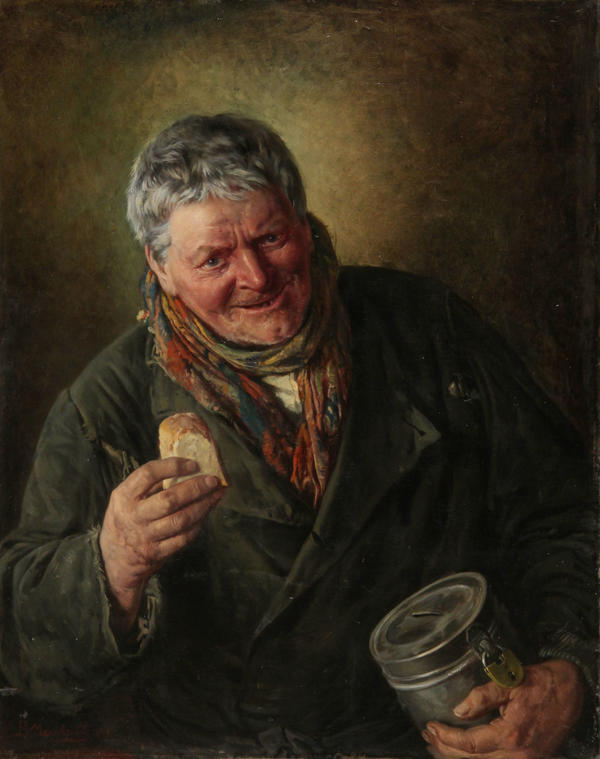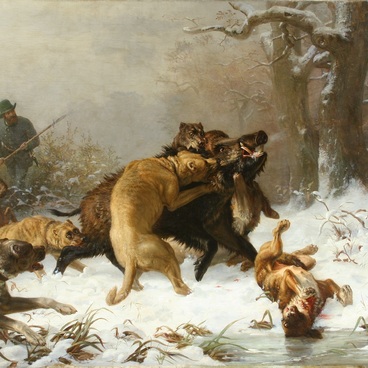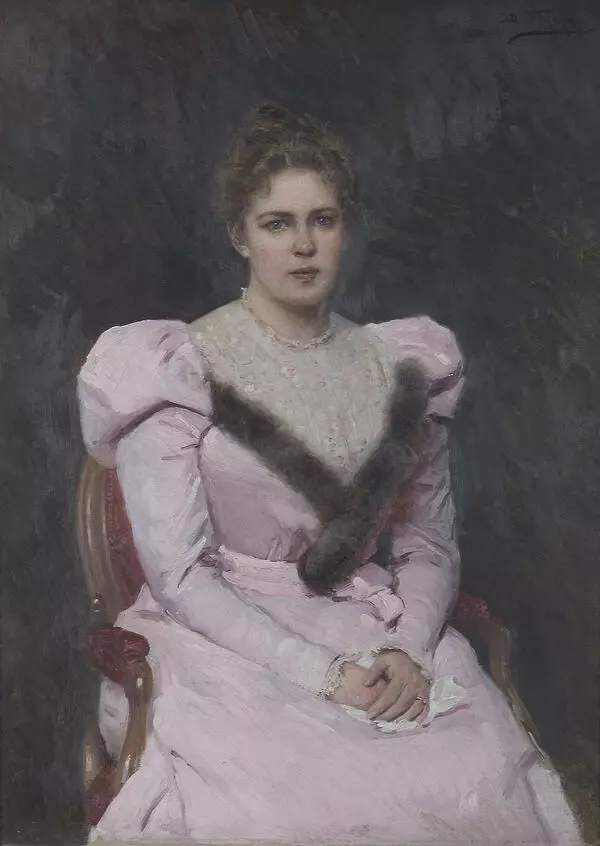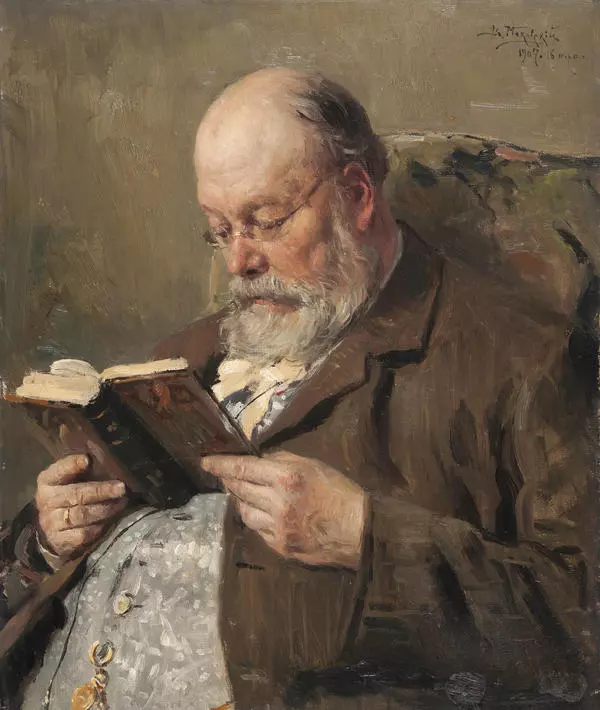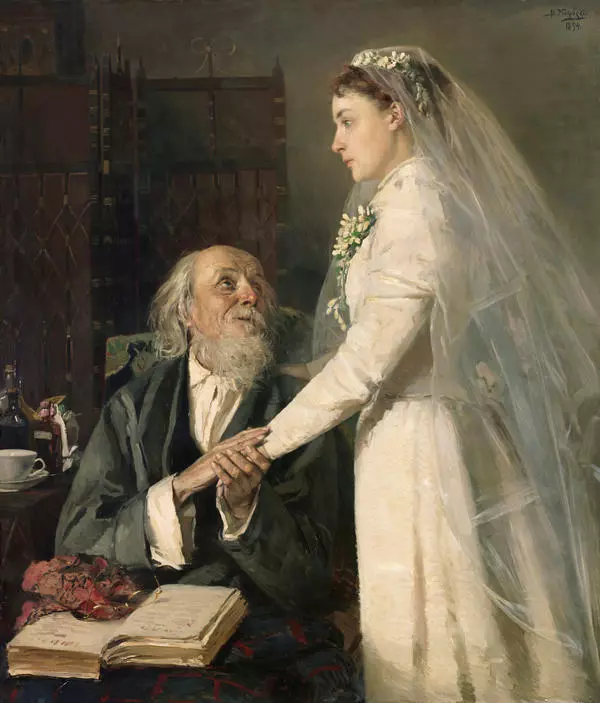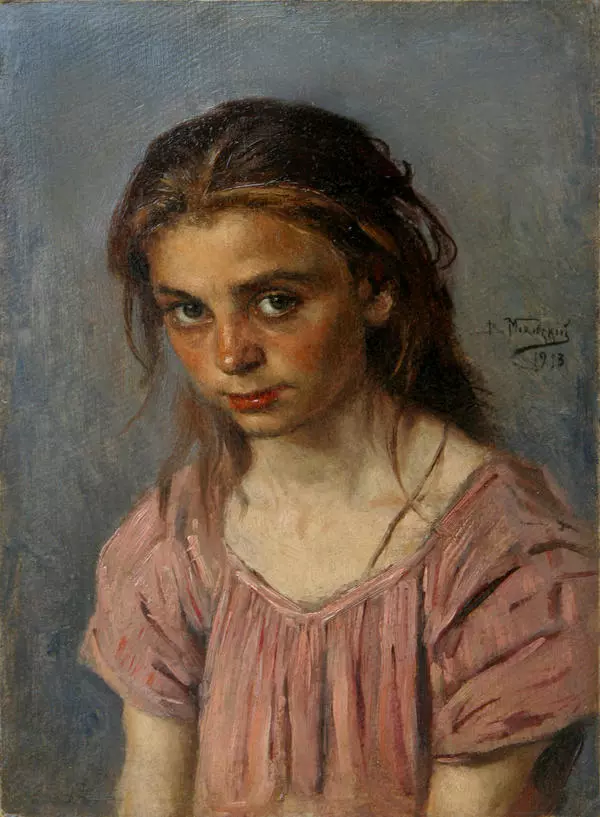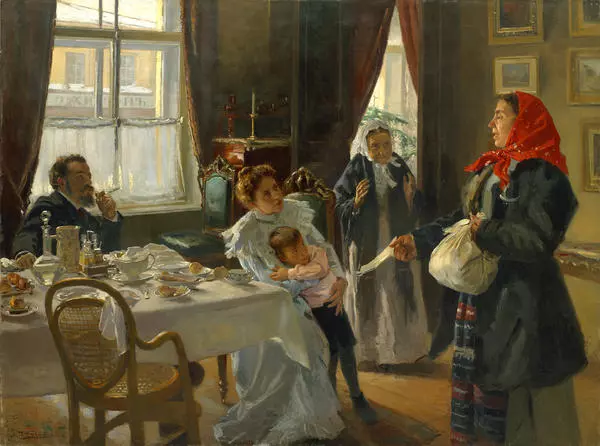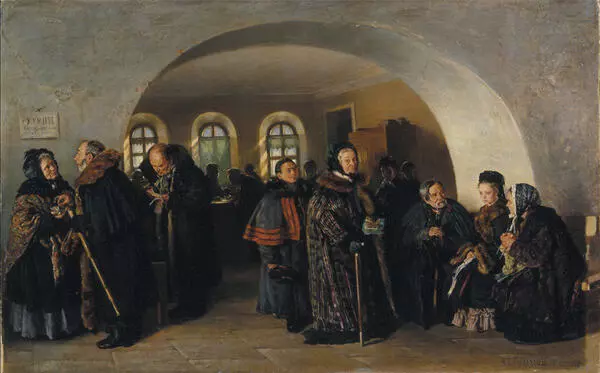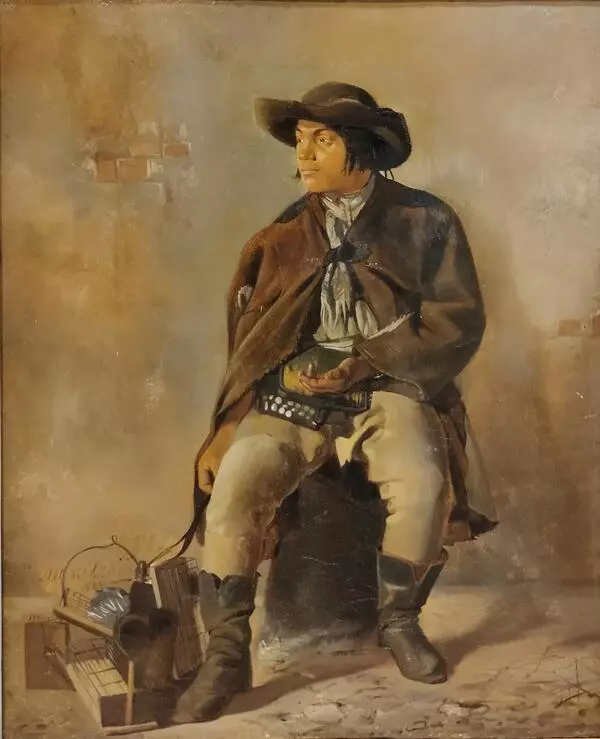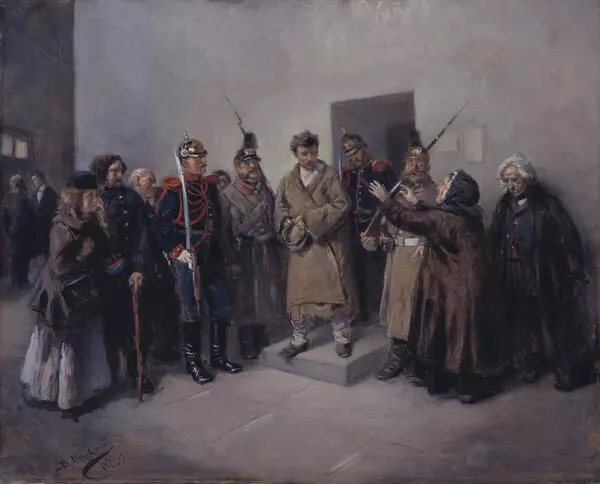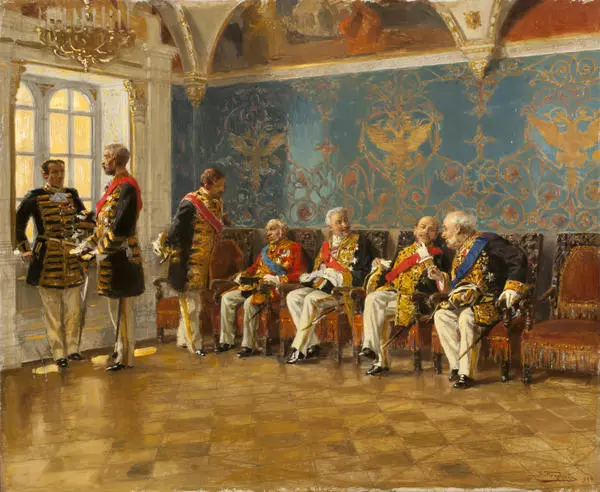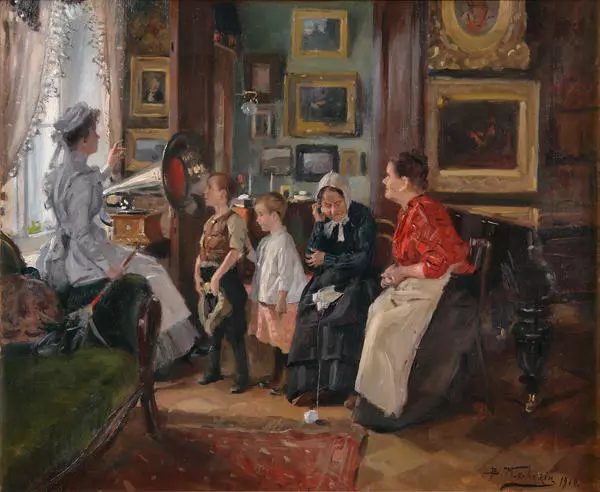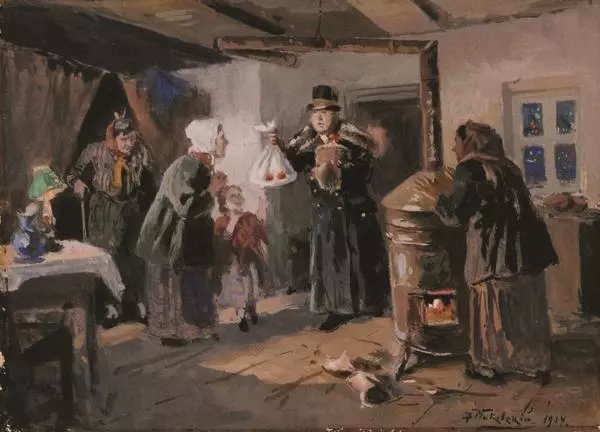Vladimir Makovsky, an artist associated with the group Peredvizhniki, was also graphic artist, teacher, academic and fellow member of the Saint Petersburg Academy of Arts. His main focus was on genre painting, most closely associated with modernity.
In 1872, Vladimir Makovsky joined the Society for Travelling Art Exhibitions Peredvizhniki (The Wanderers), becoming one of its active participants. His main subject in the 1870s was the image of the ‘small man’, his joys and sorrows.
V.Makovsky was a master of genre painting. In his numerous works, he showed the life of almost all social groups in Russia, covering over sixty years of its history. Clear content, depth of thought, truthfulness and entertaining presentation distinguish the best works of the artist. His early paintings are good-humored, but over time Makovsky introduces the alarming message of social injustice, humiliation and offense. Numerous characters of his genre paintings are quintessential. Contemporaries of Makovsky recall an interesting story. When a foreign artist, amazed at the variety of characters in Makovsky’s paintings, asked him to show his models, Makovsky pointed to a noisy street and said: “Here are my models!”
In the early 1870s, the artist used to observe the life of “small men” and paint single-figure compositions. Among them is the “Deacon”, a petty church official depicted with warm sympathy. Usually the Wanderers were critical about the ministers of the church, but Makovsky made a soft, ironic interpretation of the character. In the right hand the deacon holds an altar bread used in the Orthodox worship rituals, while in the left hand he is holding a mug for collecting alms. The same old man posed for Makovsky “s painting “Church Watchman” from the collection of the Russian Museum in Saint Petersburg. The work is distinguished by its pedantic representation of everyday life, completed in a picturesque way.
In 1872, Vladimir Makovsky joined the Society for Travelling Art Exhibitions Peredvizhniki (The Wanderers), becoming one of its active participants. His main subject in the 1870s was the image of the ‘small man’, his joys and sorrows.
V.Makovsky was a master of genre painting. In his numerous works, he showed the life of almost all social groups in Russia, covering over sixty years of its history. Clear content, depth of thought, truthfulness and entertaining presentation distinguish the best works of the artist. His early paintings are good-humored, but over time Makovsky introduces the alarming message of social injustice, humiliation and offense. Numerous characters of his genre paintings are quintessential. Contemporaries of Makovsky recall an interesting story. When a foreign artist, amazed at the variety of characters in Makovsky’s paintings, asked him to show his models, Makovsky pointed to a noisy street and said: “Here are my models!”
In the early 1870s, the artist used to observe the life of “small men” and paint single-figure compositions. Among them is the “Deacon”, a petty church official depicted with warm sympathy. Usually the Wanderers were critical about the ministers of the church, but Makovsky made a soft, ironic interpretation of the character. In the right hand the deacon holds an altar bread used in the Orthodox worship rituals, while in the left hand he is holding a mug for collecting alms. The same old man posed for Makovsky “s painting “Church Watchman” from the collection of the Russian Museum in Saint Petersburg. The work is distinguished by its pedantic representation of everyday life, completed in a picturesque way.
In 1925, the painting was transferred to Omsk from the State Museum Cectionol. Earlier, it belonged to the famous Moscow collector Kozma Soldatyonkov, later donated to the Rumyantsev Museum.

